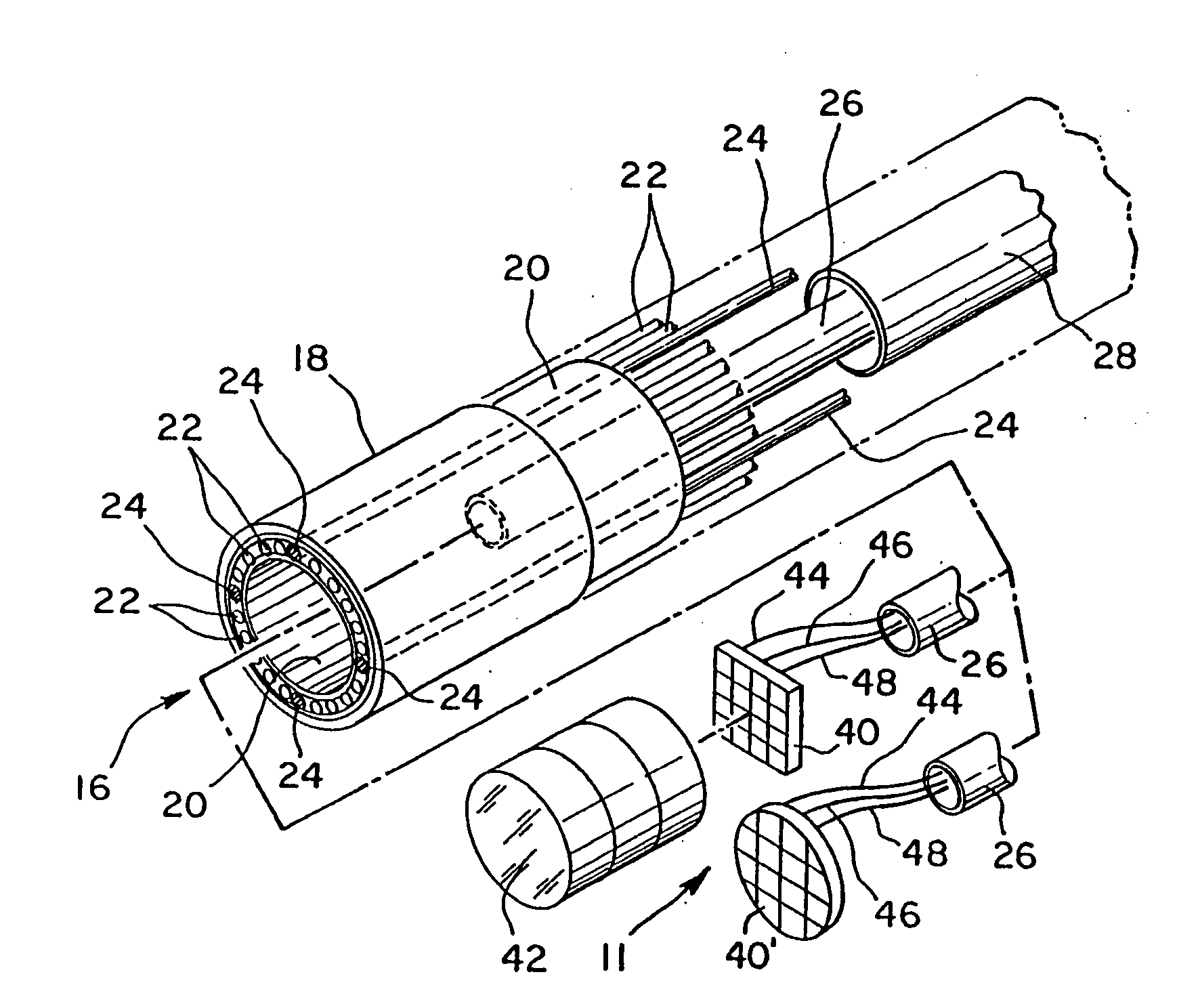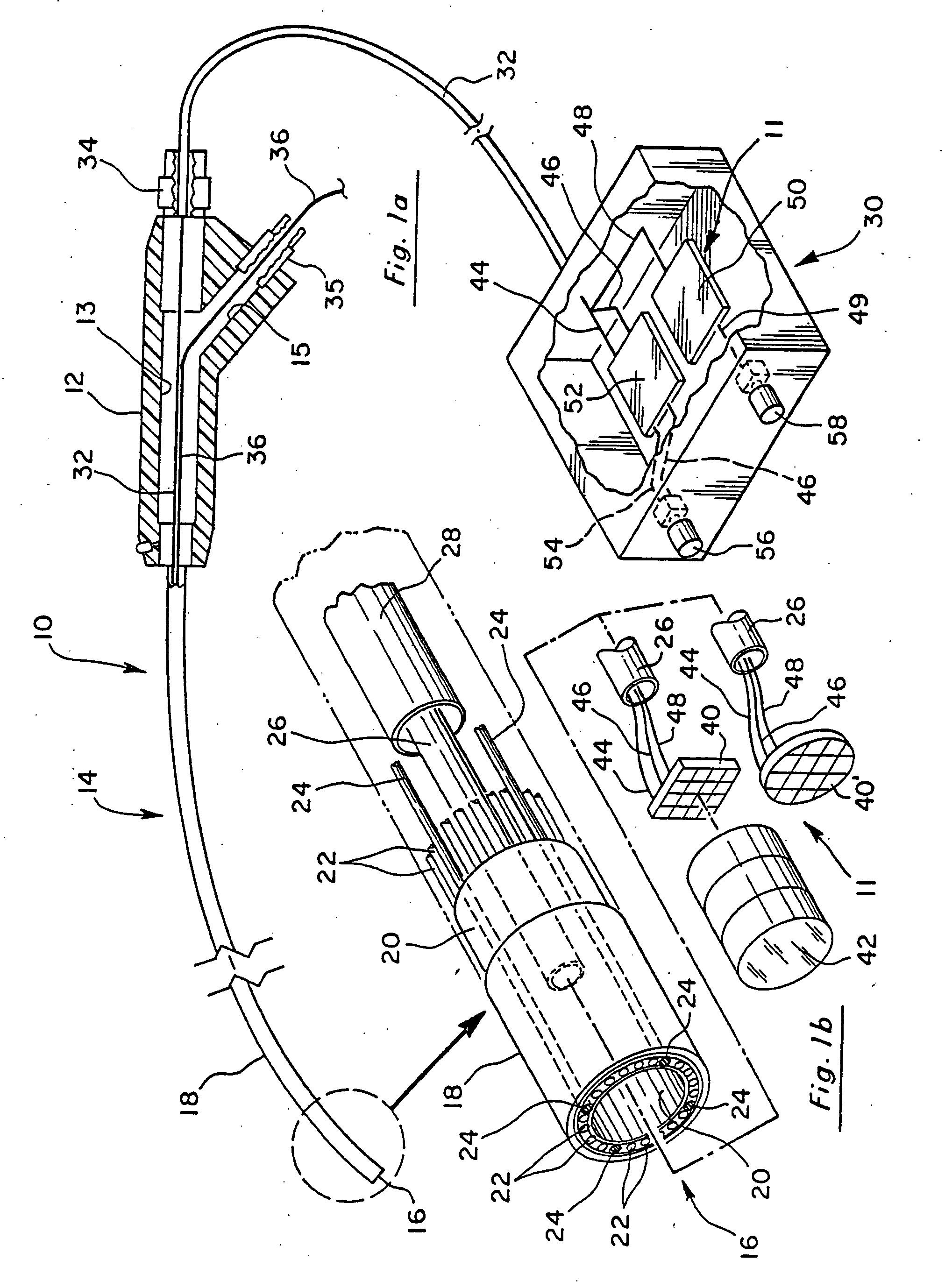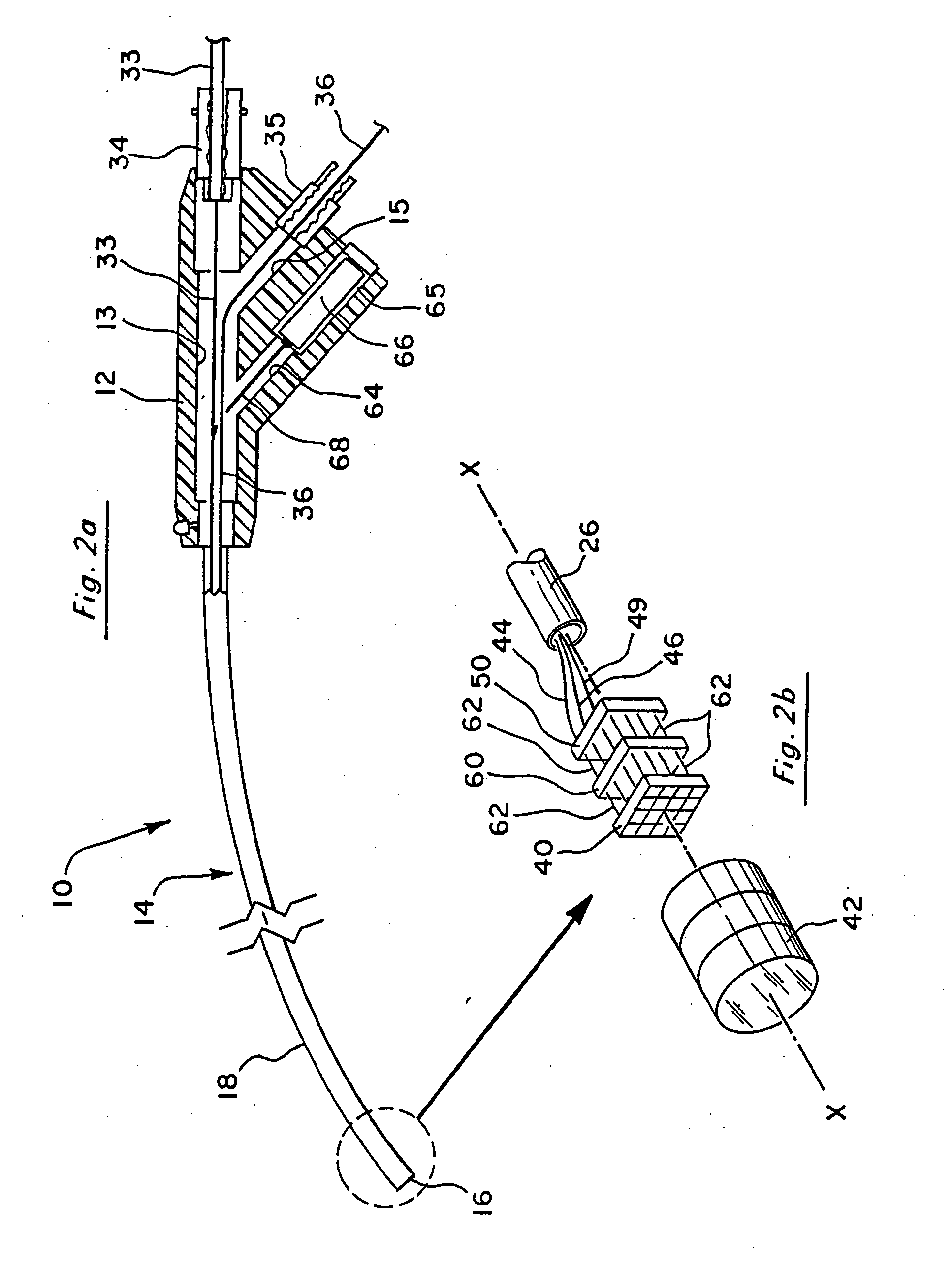Reduced area imaging device incorporated within wireless endoscopic devices
a wireless endoscope and imaging device technology, applied in the field of solid-state image sensors incorporated within wireless endoscopes, can solve the problem of low power supply (5 volts), and achieve the effect of enhancing the ease of use of the wireless endoscope, simplifying the maneuvering of the endoscope, and enhancing the maneuverability of the endoscop
- Summary
- Abstract
- Description
- Claims
- Application Information
AI Technical Summary
Benefits of technology
Problems solved by technology
Method used
Image
Examples
first embodiment
[0056] In all of the arrangements of the imaging device discussed above with respect to the endoscope, each of the elements or components of the imaging device electrically communicate with one another through a wired connection.
[0057]FIG. 4 is a schematic diagram illustrating one way in which the imaging device 11 may be constructed. As illustrated, the image sensor 40 may include the timing and control circuits on the same planar structure. Power is supplied to image sensor 40 by power supply board 52. The connection between image sensor 40 and board 52 may simply be a cable having two conductors therein, one for ground and another for transmitting the desired voltage. These are illustrated as conductors 44 and 46. The output from image sensor 40 in the form of the pre-video signal is input to video processor board 50 by means of the conductor 48. In the configuration of FIG. 4, conductor 48 may simply be a 50 ohm conductor. Power and ground also are supplied to video processing b...
second embodiment
[0080] Transceiver radio module 178 receives the post-video signals via antennae 180, decodes the signals, and then electrically transmits them to the monitor 196 for viewing by the user. The endoscope in this second embodiment is powered by a battery 176 which is housed adjacent the antennae 174. Electrical leads (not shown) extend from the battery 176 to power the image sensor and the transceiver radio element 170. As discussed further below, antennae 174 and battery 176 may be secured within their own casing or housing 172 which then connects to the handle 12 of the endoscope. Transceiver radio module 178 may simply be powered by the same electrical power source (not shown) which powers the display monitor 196, such as conventional 110 volt, 3 phase power. In order to recharge the battery 176 of the endoscope, the transceiver radio module may be a combination unit which also has a battery charge circuit 182 for recharging battery 176. Charge circuit 182 would also be powered by a...
PUM
 Login to View More
Login to View More Abstract
Description
Claims
Application Information
 Login to View More
Login to View More - R&D
- Intellectual Property
- Life Sciences
- Materials
- Tech Scout
- Unparalleled Data Quality
- Higher Quality Content
- 60% Fewer Hallucinations
Browse by: Latest US Patents, China's latest patents, Technical Efficacy Thesaurus, Application Domain, Technology Topic, Popular Technical Reports.
© 2025 PatSnap. All rights reserved.Legal|Privacy policy|Modern Slavery Act Transparency Statement|Sitemap|About US| Contact US: help@patsnap.com



